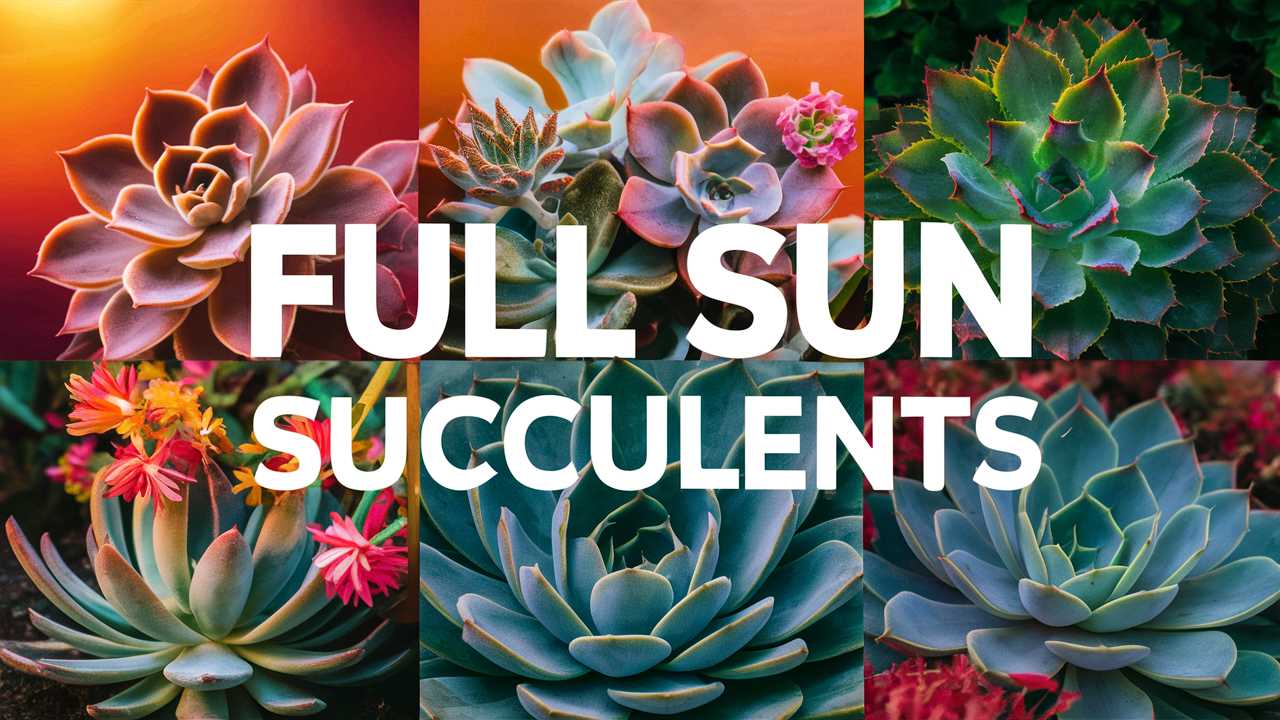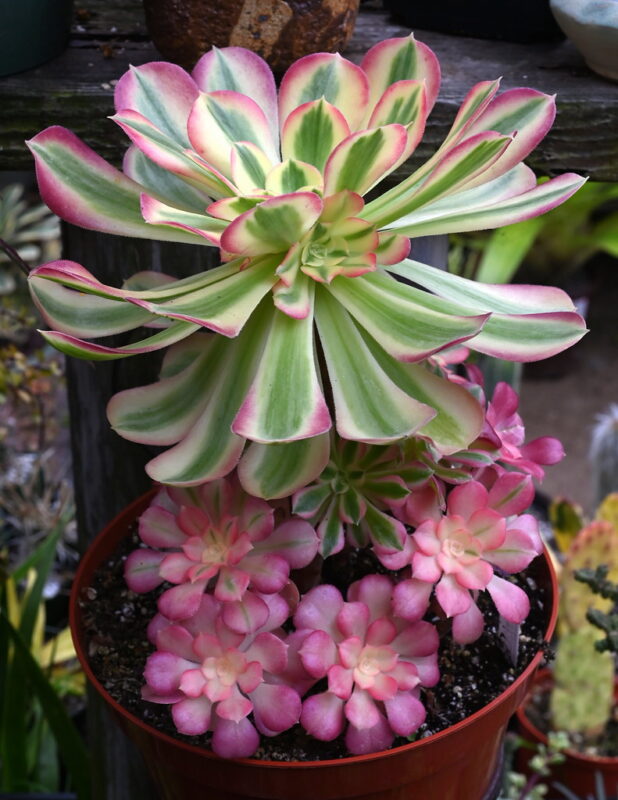In this post, we will explore various full sun succulents that not only endure intense sunlight but also flourish in it, transforming your garden or balcony into a vibrant oasis. Whether you’re a seasoned gardener or just starting your succulent journey, this guide will help you choose the best sun-loving succulents for your space.
Adenium – Adenium obesum
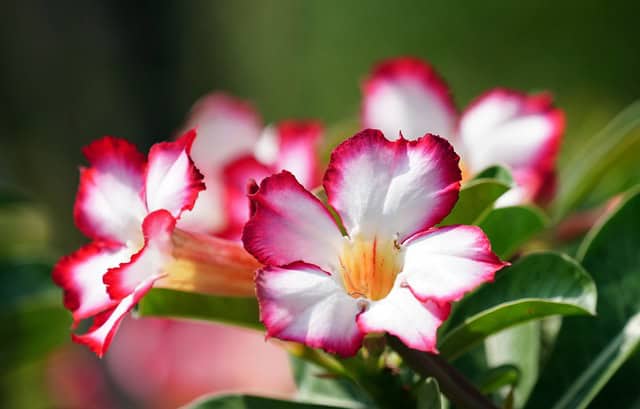
Commonly known as the Desert Rose, Adenium obesum stands out with its striking, trumpet-shaped flowers that bloom in hues of pink and red. This succulent thrives in hot climates, requiring full sun to produce its best blooms. The Desert Rose loves well-draining soil and benefits from regular watering during its growing season. Interestingly, this plant has a unique swollen stem that serves as a water reservoir, allowing it to store moisture during dry periods.
In addition to its stunning flowers, Adenium is known for its resilience. It can tolerate drought but prefers a balanced regimen of watering and fertilization. One of the joys of growing Adenium is witnessing its growth—over time, it develops a beautiful “caudex,” giving it a sculptural quality. Just remember, while the Desert Rose embodies beauty, it is also toxic if ingested, so keep it away from curious pets and children.
Aeoniums – Mardi Gras
With their vibrant and colorful rosettes, Aeonium ‘Mardi Gras’ brings a festive touch to any garden. This succulent prefers full sun but can tolerate some light shade in particularly hot climates. The leaves boast a beautiful blend of greens, yellows, and reds, creating a stunning contrast against rocky backgrounds or garden beds.
Aeoniums have a unique growing habit—when temperatures rise, they’ll often go dormant, which means they need less water. To keep these beauties thriving, regular watering is essential during the active growing season in spring and fall. Their ability to adapt to poor soil conditions makes them ideal for gardeners who want a low-maintenance yet visually appealing succulent. Use well-draining soil and provide occasional fertilization for optimal growth.
Agave – Snow Glow
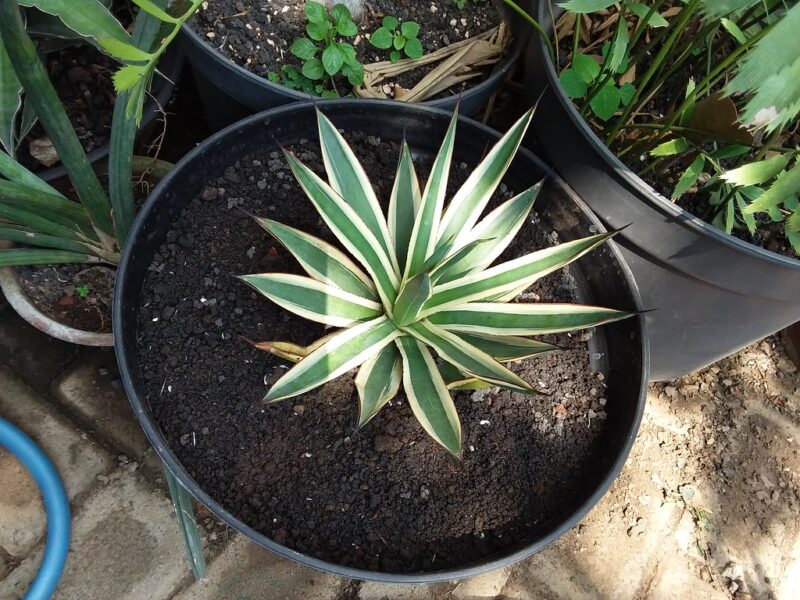
Agave ‘Snow Glow’ is a striking succulent known for its frosty, variegated leaves adorned with sharp edges. This succulent thrives in full sun and is drought-tolerant, making it perfect for arid gardens. Not only does ‘Snow Glow’ offer stunning aesthetics, but it’s also relatively easy to care for. It prefers well-draining soil, and while it loves to soak up sunlight, it’s important to protect it from frost.
Agaves are also known for their air-purifying properties, promoting healthier living environments. Over time, the central rosette of ‘Snow Glow’ can grow into spectacular size, adding drama to your landscape. Just be cautious when handling; the spiky leaves can often be a hazard!
Argyroderma – Argyroderma testiculare
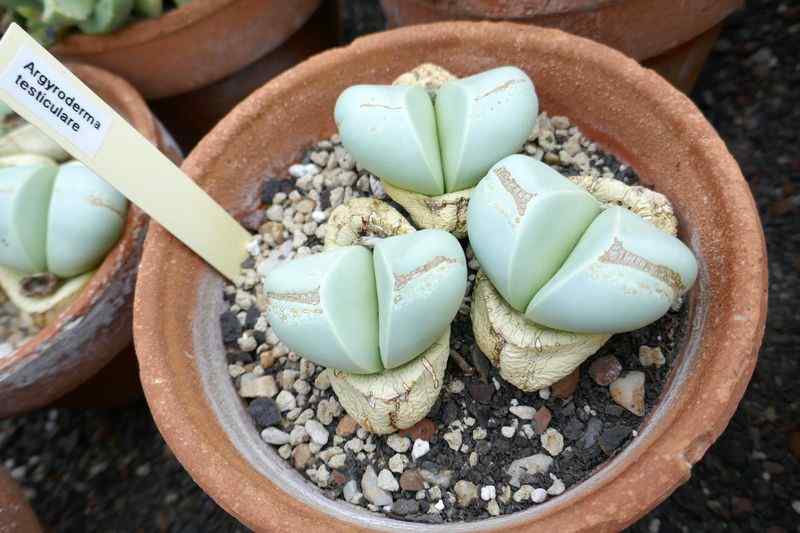
Argyroderma testiculare, affectionately known as the “button plant,” stands out for its unique, rounded leaves that resemble small stones. This South African native is a gem for full sun gardens, as it can withstand harsh conditions. The plant has a fascinating feature; its leaves actually emerge from below the soil, making it a fun find in any rock garden.
Being a drought-resistant plant, Argyroderma requires minimal watering—perhaps only during its active growth period in the spring. This succulent also thrives in sandy, well-drained soil. With its quirky appearance and low maintenance, it’s perfect for those looking to add something unconventional to their collection.
Borzicactus (or Cleistocactus) – Cleistocactus sepium
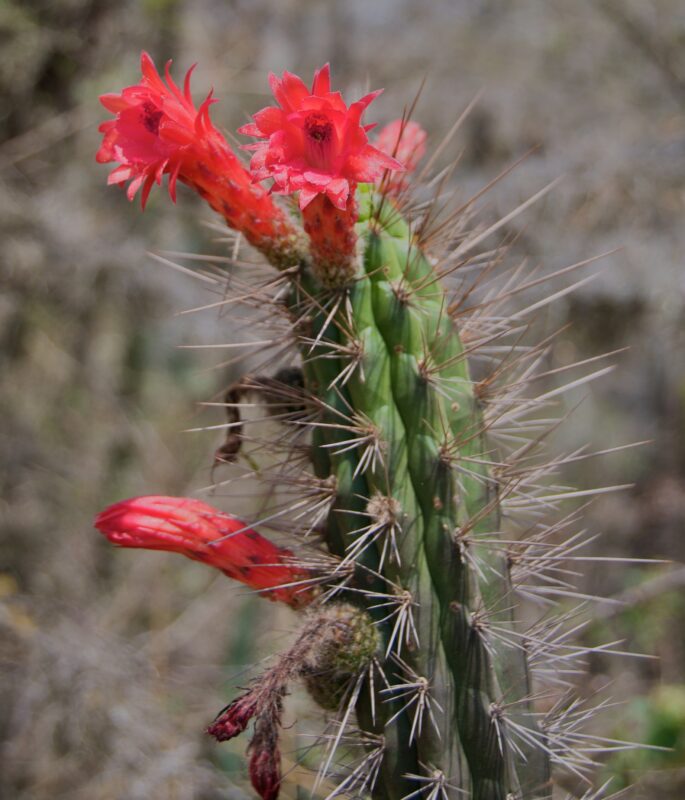
The Cleistocactus sepium is often overshadowed by its more famous cactus cousins. However, when planted in full sun, it displays enchanting, tubular flowers that bloom in an eye-catching red-orange in spring and summer. This cactus adapts easily to various soil types, favoring well-draining conditions above all.
Cleistocactus sepium is generally a low-maintenance plant. Its growth habit can be sprawling, making it an excellent choice for hanging baskets or cascading over rock walls. Just remember, even though they thrive in hot climates, they still appreciate some protection from extreme midday heat. Their resilience and striking blossoms are sure to make them a conversation starter in your garden.
Cephalocereus – Cephalocereus senilis

Known as the “Old Man Cactus,” Cephalocereus senilis captures attention with its dense, white hairs that give it an elderly appearance. Native to Mexico, this cactus can grow quite tall, reaching heights of up to 15 feet in the right conditions. Full sun is essential for this plant, as it helps cultivate the unique hair-like spines that protect it from harsh sunlight.
As a relatively slow grower, Cephalocereus requires patience but rewards you over the years with its majestic stature. Water sparingly—allow the soil to dry out between waterings to prevent rot. This stunning succulent doesn’t just serve as a striking landscape feature; it also provides habitat for various pollinators.
Cheiridopsis – Cheiridopsis denticulata
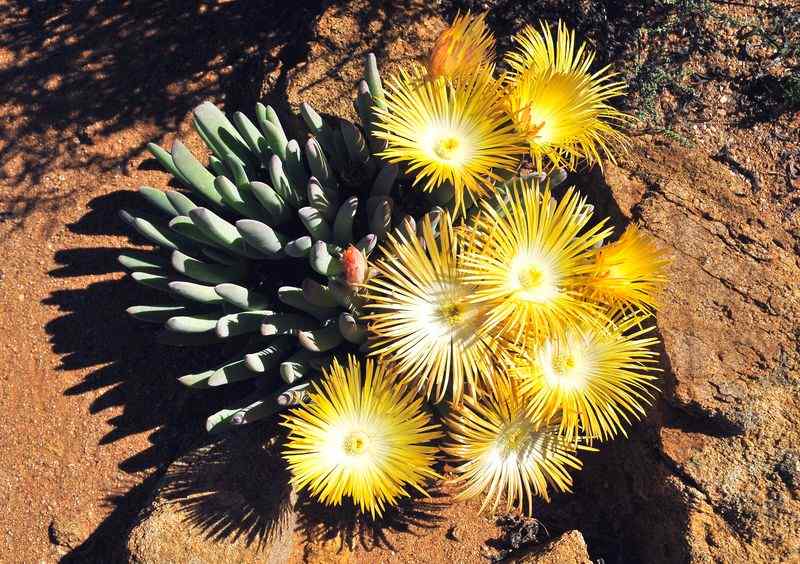
Cheiridopsis denticulata, known for its distinctive leaf arrangement resembling a tiny rosette, is an often-overlooked succulent. This plant does exceptionally well in full sun, where it can absorb more light to enhance its vibrant colors. During the blooming period, it produces captivating daisy-like flowers, adding to its charm.
Cheiridopsis thrives in gritty, well-draining soil and requires little watering, particularly during dormancy in the summer. It’s a great addition to a rock garden or container, needing only occasional care to keep it flourishing. Its unique texture and delightful blooms make it a wonderful choice for succulent collectors.
Cotyledon – Cotyledon tomentosa
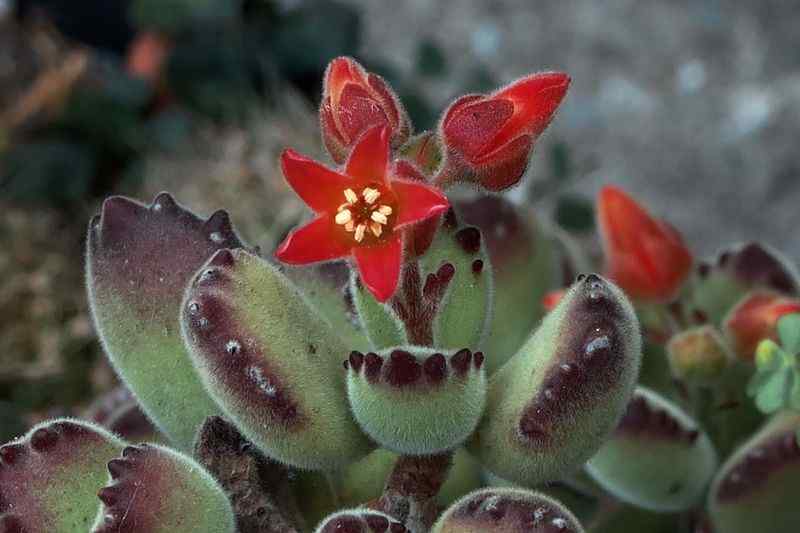
Known as Bear’s Paw due to the distinctive shaped leaves that resemble a paw print, Cotyledon tomentosa loves basking in full sunlight. With its fuzzy leaves and charming appearance, it’s a delightful choice for both indoor gardens and your backyard.
Cotyledon tomentosa does well in moderate watering. When established, it becomes drought-tolerant, thriving in rock gardens, containers, and even hanging baskets. It produces clusters of bell-shaped flowers during the summer, providing splashes of vibrant orange and red against its lush leaves. This succulent isn’t just easy on the eyes; it also provides a tactile experience, making it fun to touch!
Cylindropuntia – Cylindropuntia fulgida
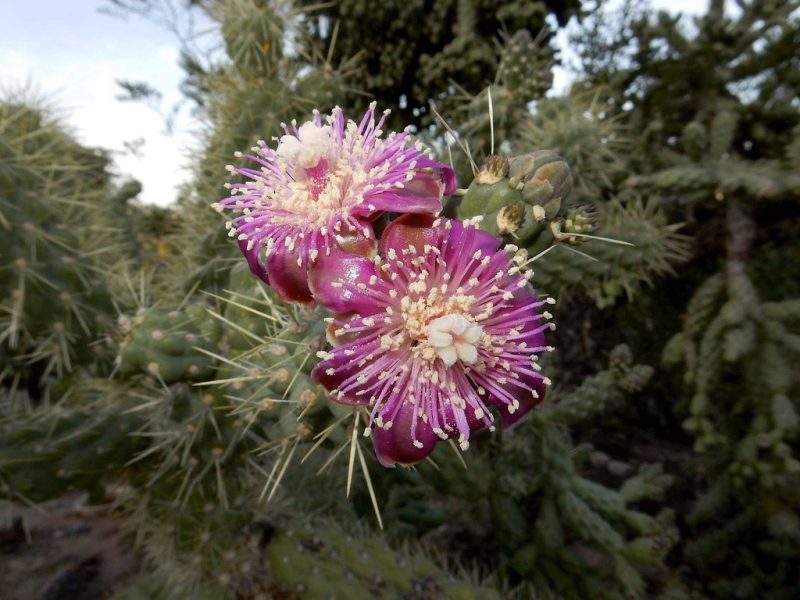
Cylindropuntia fulgida, or the “teddy bear cholla,” is a character in the desert landscape. With its tall, cylindrical stems covered in spines, it needs full sun for optimal growth. Despite its cuddly name, caution is vital; the spines can easily detach and embed in skin, making it a rather prickly companion in your garden!
This cactus thrives in sandy, dry soil and prefers infrequent watering. In late spring to early summer, it produces beautiful, vivid yellow flowers. Its unique shape and ability to adapt to various conditions make it an interesting specimen for gardeners willing to showcase its distinctive beauty.
Delosperma – Delosperma cooperi
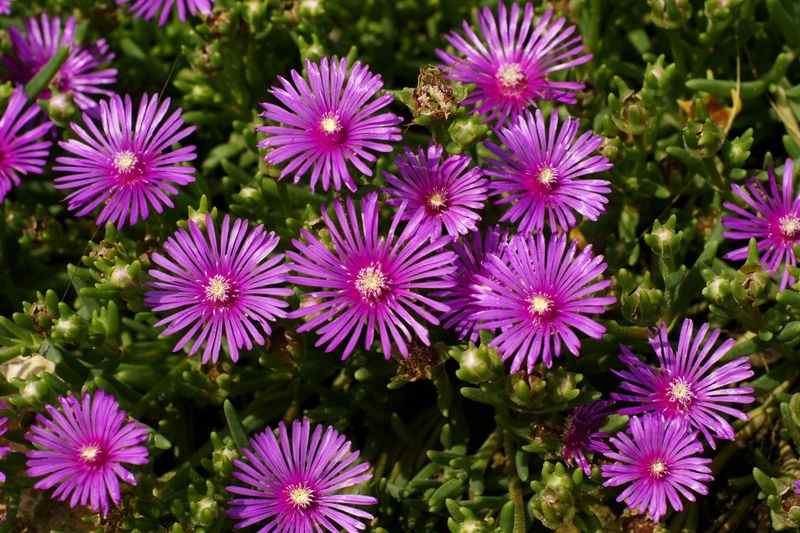
Delosperma cooperi, commonly known as the Hardy Ice Plant, presents a carpet of vibrant, daisy-like flowers during the summer months. This succulent thrives under full sun and showcases its dazzling magenta hues, beckoning pollinators into your garden. Its fleshy leaves are not just resilient; they also help it conserve water, making it an excellent choice for arid landscapes.
Delosperma is a low-maintenance plant, typically requiring little care once established. It’s perfect for creating ground cover or filling in rock gardens, as it spreads with charm. The stunning flowers and carpet-like growth habit make it a must-have for succulent lovers seeking a splash of color.
Dudleya – Dudleya caespitosa
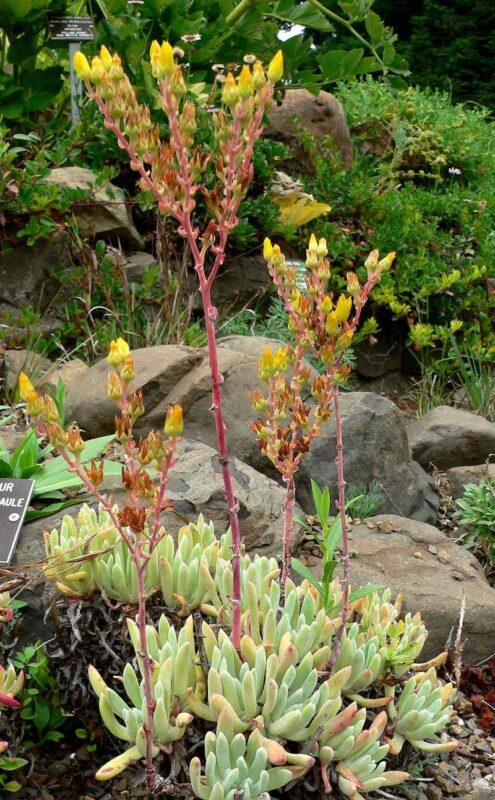
Dudleya caespitosa, often known as the California Liveforever, features rosettes that emerge from rocky crevices—a testament to its rugged nature. Thriving in full sun, this succulent showcases unique adaptations that allow it to survive in extremely arid environments.
The leaves of Dudleya are thick, fleshy, and often covered in a fine powder that helps prevent water loss. It produces clusters of delicate, tubular flowers that dance atop tall stems in the summer, providing visual interest. Dudleya is a fantastic addition to rock gardens, providing a unique texture and resilience.
Echinocactus – Echinocactus grusonii
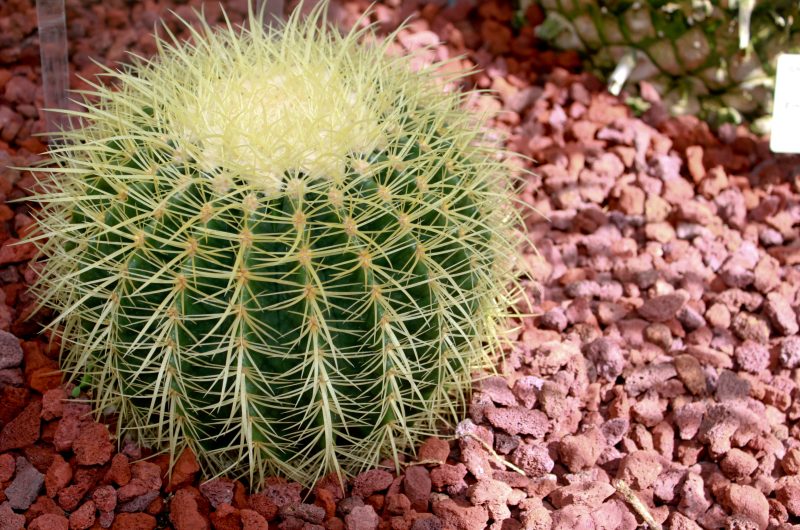
Commonly referred to as the Golden Barrel Cactus, Echinocactus grusonii captivates with its globe-like shape and vibrant golden spines. This cactus loves full sun and can withstand intense heat, making it a fabulous fit for xeriscaping.
As a slow grower, Echinocactus requires minimal care, making it ideal for novice gardeners. It thrives in well-draining soil and needs infrequent watering; too much moisture can lead to root rot. With its eye-catching form and golden hue, the Golden Barrel is sure to be a standout star in your succulent collection.
Echinocereus – Echinocereus engelmanii
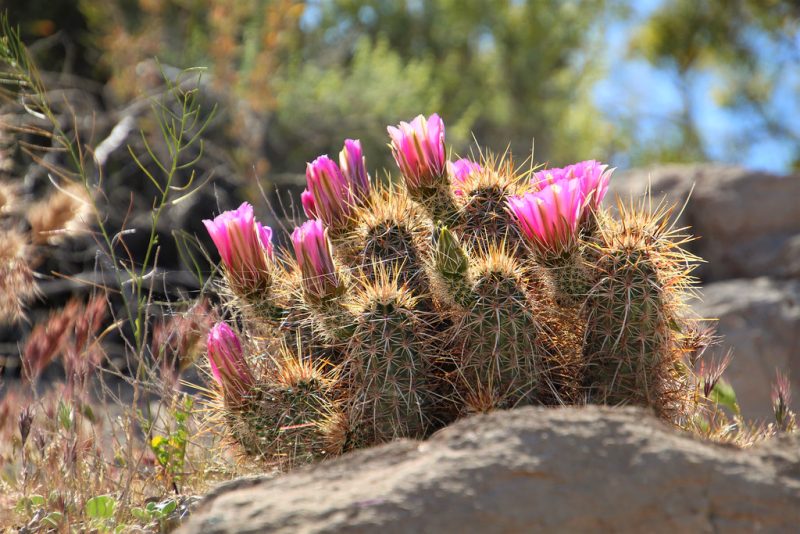
Echinocereus engelmanii, or Engelmann’s Hedgehog cactus, is an inviting choice for full sun gardens. Its cylindrical shape is adorned with numerous spines, which can vary in color depending on environmental conditions. When in bloom, this cactus produces fabulous pink to purple flowers that attract pollinators, creating a delightful sight.
This hardy cactus appreciates low-water conditions and grows well in sandy soil. Given its adaptable nature, Engelmann’s Hedgehog fits perfectly into various settings, from desert gardens to containers. Its resilience and blooms make it a captivating addition to any sunny landscape.
Espostoa – Espostoa guentheri
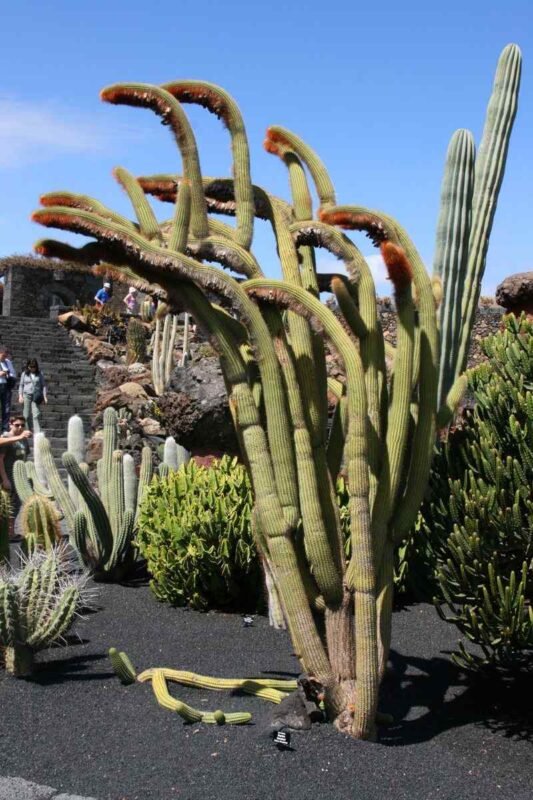
Espostoa guentheri is celebrated for its unique, woolly appearance, earning it the nickname “Old Man Espostoa.” Thriving in full sun, this columnar cactus can grow to impressive heights. It features dense, white hairs protecting it from harsh sunlight, a fascinating adaptation for desert life.
Watering needs are minimal; allow the soil to dry out completely between waterings. This cactus will reward you with magnificent yellow flowers when conditions are right. Its unforgettable form and low maintenance make it an excellent addition for both novice and experienced succulent growers.
Faucaria – Faucaria tigrina
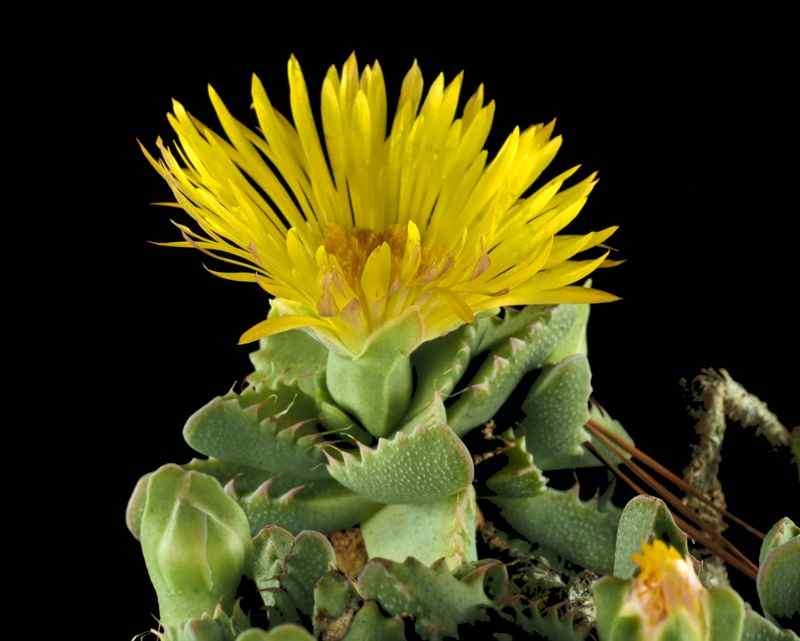
Faucaria tigrina, or the Tiger Tooth succulent, is known for its toothed edges, giving it a unique appearance. This succulent flourishes in full sun, showcasing vibrant yellow flowers during its blooming season in autumn.
Tiger Tooth is relatively easy to cultivate, requiring well-draining soil and moderate watering. It prefers a dry environment, making it suitable for drought-tolerant gardens. With minimal care, this succulent becomes a stunning focal point with its engaging shape and delightful flowers.
Fenestraria – Fenestraria aurantiaca
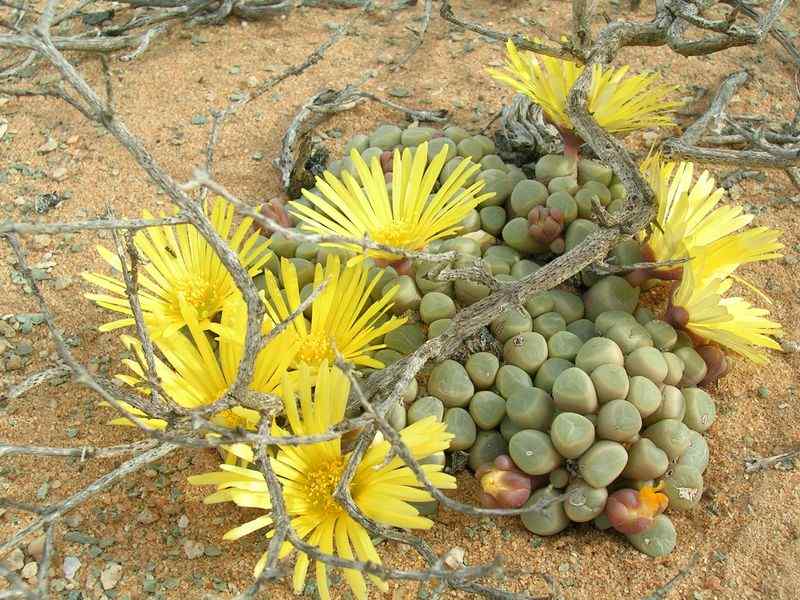
Known commonly as the “Baby Toes,” Fenestraria aurantiaca features small, finger-like leaves that emerge from the soil. This fascinating succulent thrives in full sun, where it can soak in abundant light and showcase its unique form.
Creating a compact growth habit, this succulent is perfect for rock gardens or pots. It has minimal watering needs and prefers sandy, well-draining soil. The translucent tips of the leaves serve as a fascinating feature, allowing you to witness the magic of sunlight filtering through them.
Ferocactus – Ferocactus echidne
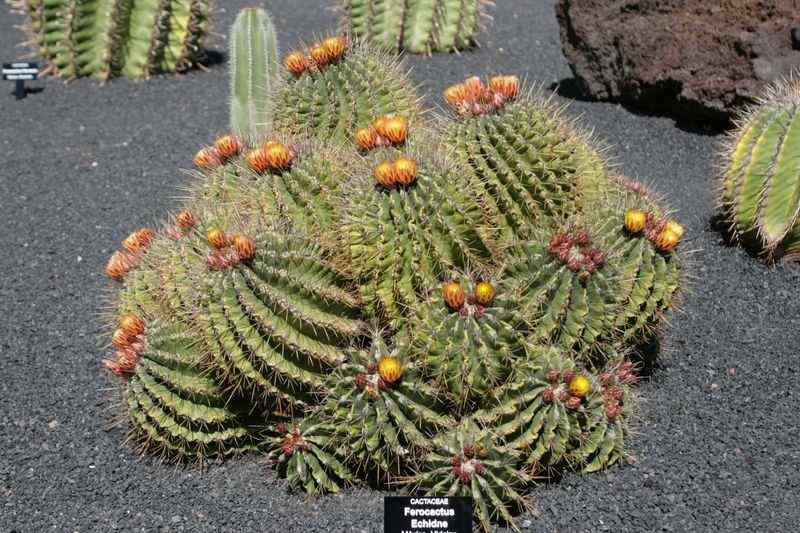
Ferocactus echidne, commonly known as the Sea Urchin cactus, is an impressive example of nature’s art. With its rugged, spiny exterior and bold colors, it thrives in sunny gardens where high temperatures prevail. This cactus can grow quite large, enhancing its visual impact.
Ferocactus prefers dry conditions and tolerates low-water environments. Occasional watering is essential to encourage growth, particularly during its active period in spring and summer. With stunning blooms that emerge from the apex, it’s sure to draw attention from visitors in your garden.
Frailea – Frailea castanea
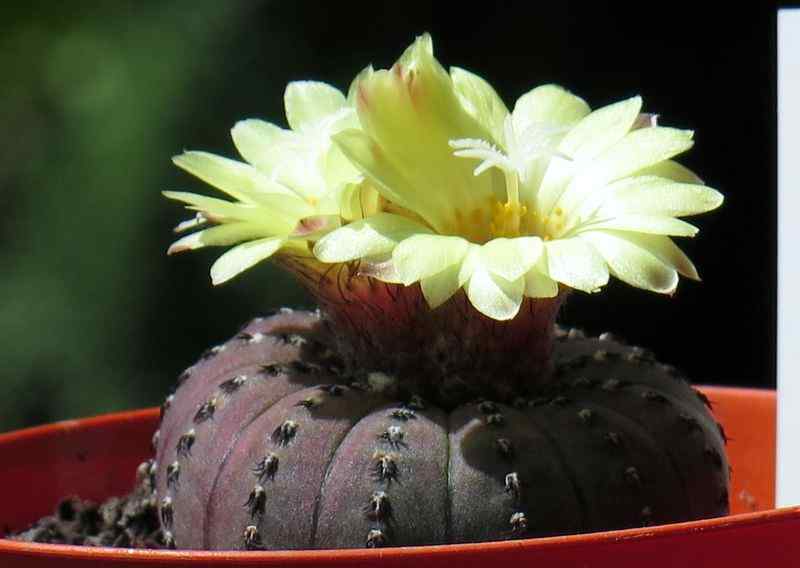
Frailea castanea is a unique, small cactus that features a globular form and attractive spines. This little charmer thrives in full sun and is perfect for collectors seeking compact succulents. Its delightful flowers bloom in striking shades of yellow, often appearing during summer months.
Enjoying well-draining soil and minimal watering, Frailea is ideal for rock gardens or potted displays. Its small size and captivating blooms make it an exceptional choice for gardeners looking to incorporate subtle beauty into their landscape.
Hechtia – Hechtia texensis
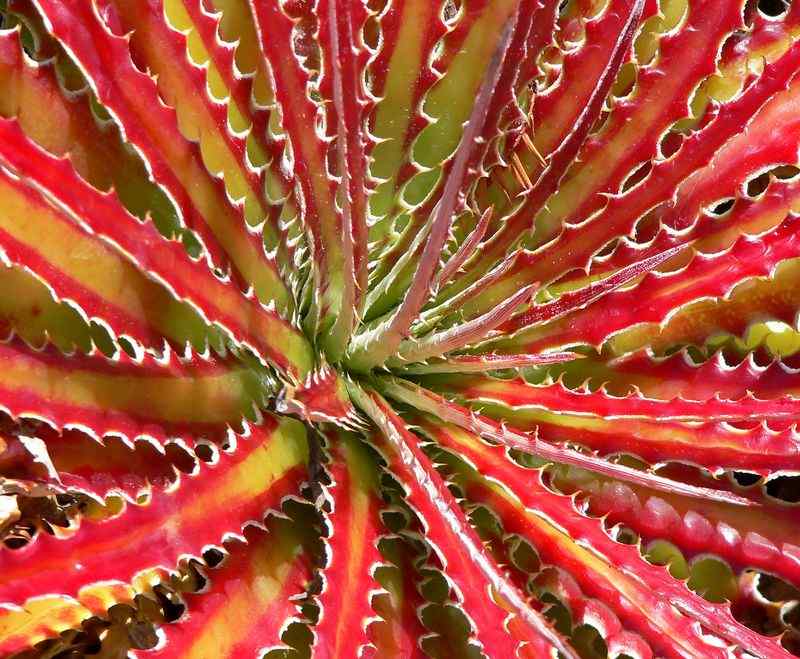
Hechtia texensis, a native to the deserts of Texas, is a luxurious choice for gardeners interested in dramatic focal points. This rosette-forming succulent thrives in full sun, flourishing in dry, sandy soil.
With its leathery leaves and spiny edges, Hechtia stands as a resilient plant that requires minimal care. Emphasizing its unique textures, it produces subtle flowers that add interest to your garden. Perfect for xeriscaping, it’s a stunning addition for those who want to embrace the beauty of arid environments.
Hoodia – Hoodia gordonii
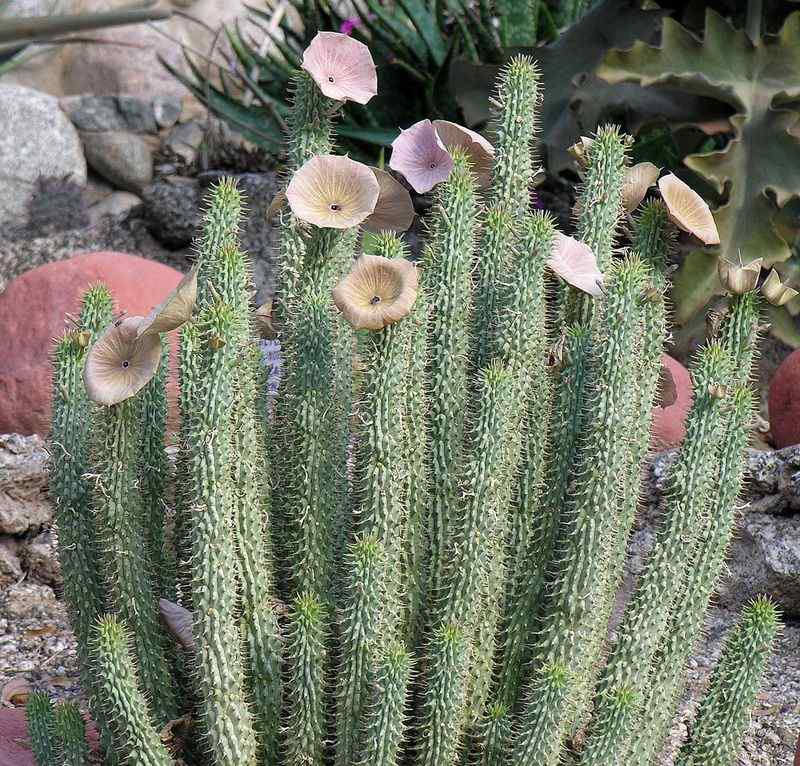
Known for its intriguing appearance and medicinal properties, Hoodia gordonii is a succulent that thrives in full sun, making it an exciting choice for any succulent collection. This plant has fleshy stems that can reach impressive heights and often blooms spectacular flowers, adding to its allure.
As a drought-resistant plant, Hoodia requires minimal watering and flourishes in sandy, well-draining soil. If you’re interested in unique plants with a story, Hoodia’s history as a traditional hunger suppressant makes it a fascinating option for your garden.
Kalanchoe – Kalanchoe daigremontiana
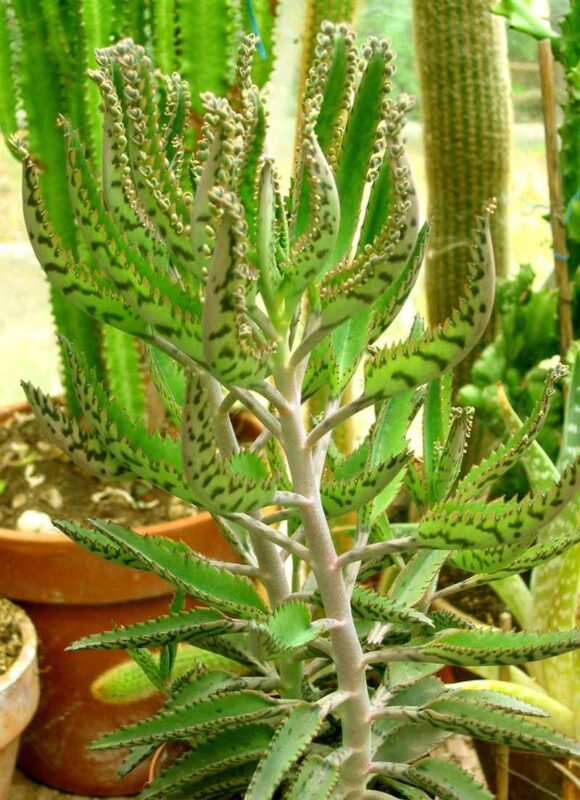
Kalanchoe daigremontiana, commonly referred to as Mother of Thousands, stands out for its unique propagation method, giving it a special appeal. Thriving in full sun, this succulent can produce numerous plantlets along its leaf edges that can be easily propagated in your garden.
This versatile plant does well in well-draining soil and minimal watering. As it grows, it develops captivating clusters of tubular flowers, adding charm and color to sunny spots. It’s an ideal choice for gardeners looking for easy-care succulents that provide a delightful spectacle.
Lapidaria
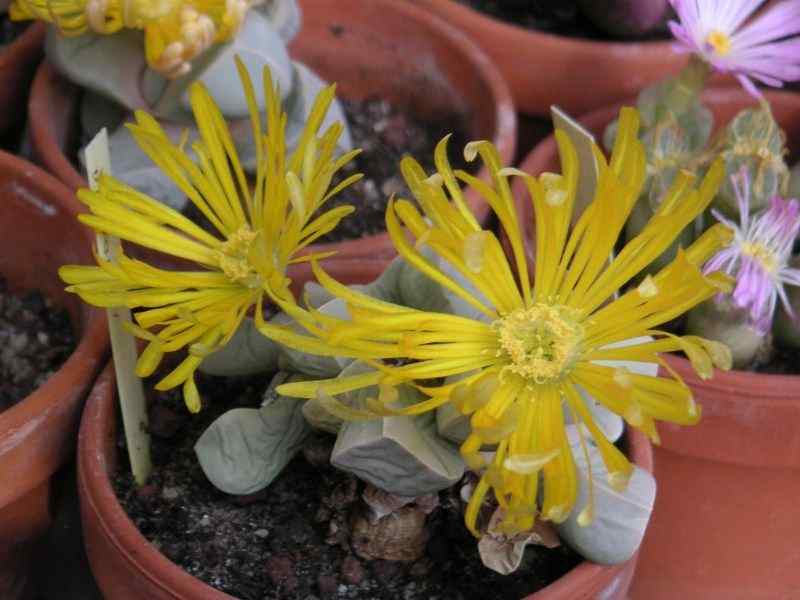
Lapidaria, with its stone-like appearance, is a captivating succulent that embodies resilience. It thrives in full sun, where its unique form often blends seamlessly into rocky landscapes. This plant showcases lovely flowers during blooming season, which emerge as delightful surprises.
Liberal use of well-draining soil and infrequent watering create an ideal environment for Lapidaria. As a distinct addition to any garden, it offers a unique aesthetic while exemplifying the beauty of sun-loving plants.
Lobivia – Lobivia famatimensis
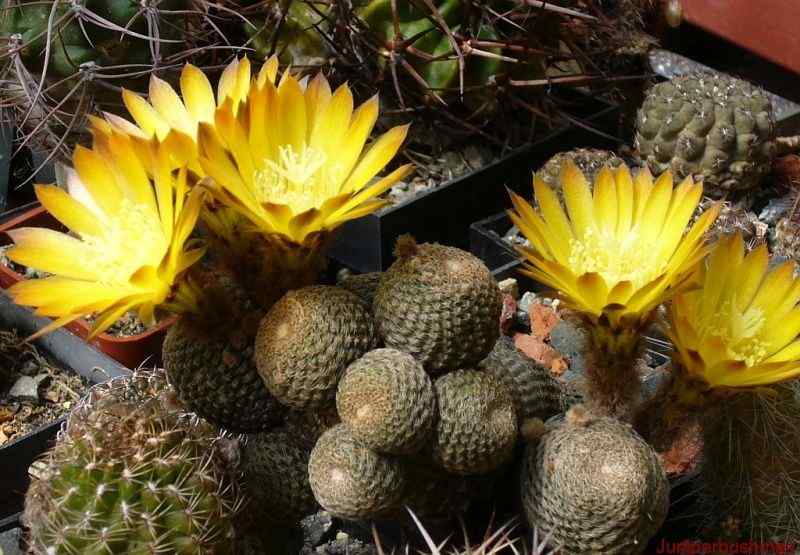
The Lobivia famatimensis cactus is a delightful species that flourishes in full sunlight. Often showcasing vibrant flower blooms, which can be red, orange, or yellow, this cactus thrives in a variety of conditions but prefers sandy, well-draining soil.
Lobivia is generally low-maintenance and appreciates infrequent watering. Its compact size makes it an excellent choice for potting or small garden spaces, where it can overflow with color and beauty throughout its blooming season.
Manfreda – Manfreda maculosa

Manfreda maculosa, commonly known as the Texas Manfreda, showcases remarkable spotted leaves that create an eye-catching display. Thriving in full sun, this succulent brings a touch of wild sophistication to any garden.
It enjoys a well-draining mix and requires infrequent watering. In mid to late summer, beautiful flowering stalks emerge, adding splashes of color to this stunning plant. Its unique markings and resilient nature make it a favorite among succulent enthusiasts.
Mangave – Black Magic
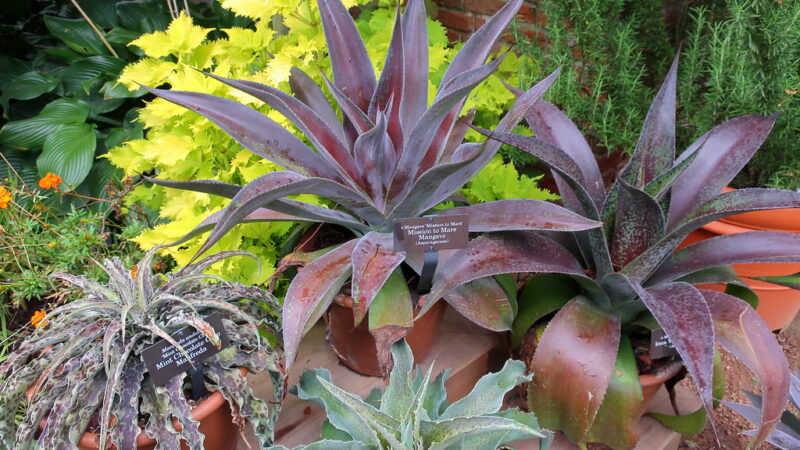
The Mangave ‘Black Magic’ is a captivating hybrid between Agave and Manfreda, showcasing striking dark leaves with intricate markings. This stunning succulent flourishes in full sun, where its colors become even more vibrant.
Black Magic tolerates drought conditions but appreciates minimal watering during its active growth season. Its dramatic appearance and unique lineage make it a remarkable addition for those looking to enhance visual interest in their garden spaces.
Melocactus – Melocactus mantanzanus
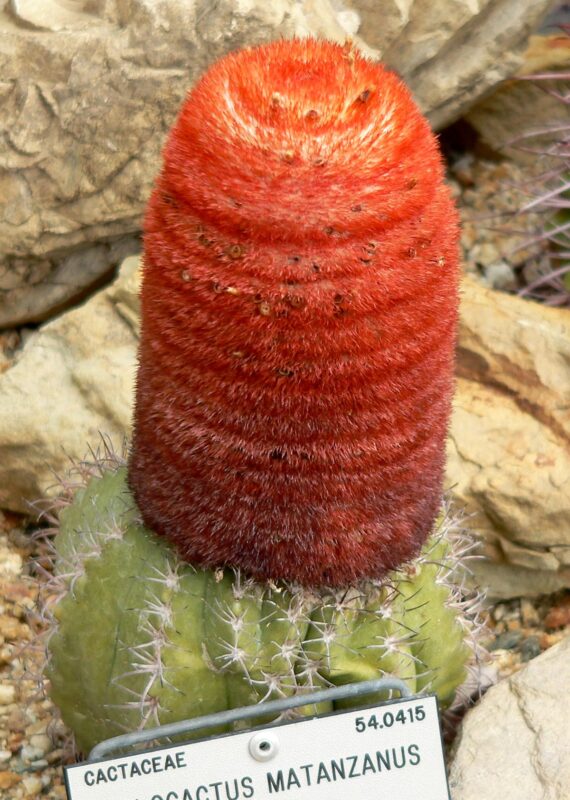
Melocactus mantanzanus, known as the Turk’s Cap cactus, is an impressive specimen with a unique crown of wooly hair atop its cylindrical body. This cactus flourishes in full sunlight and tolerates long periods of drought.
It prefers well-draining soil and should be watered sparingly. The welcoming pink flowers that emerge are an eye-catching complement to its spiky exterior. This succulent’s striking personality makes it a worthy addition to any garden or collection.
Nananthus – Nananthus vittatus
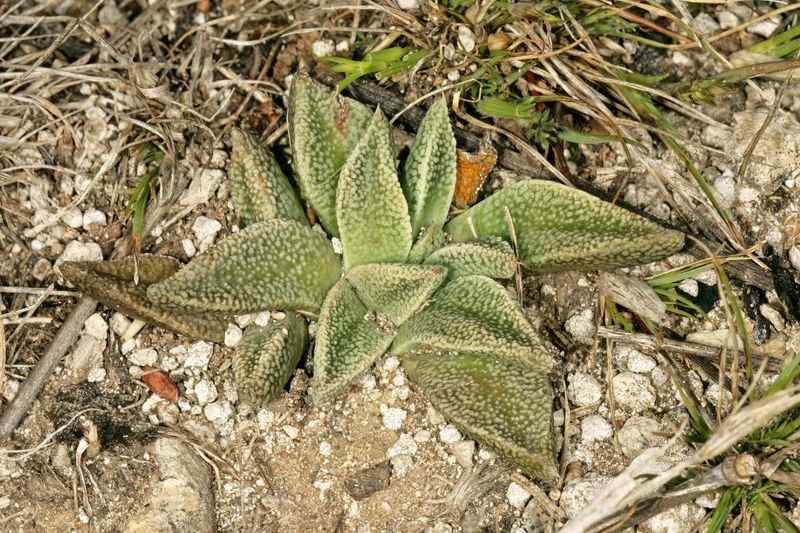
Nananthus vittatus, affectionately known as the “green pearl plant,” embodies charm and elegance. This succulent flourishes in full sunlight and exhibits striking leaf patterns that add a distinct texture to containers or garden beds.
With minimal care and infrequent watering, Nananthus can thrive in sandy, dry environments. Its unexpected ability to showcase delightful pink flowers makes it a beautiful choice for garden enthusiasts seeking unique specimens.
Neoporteria – Neoporteria senilis
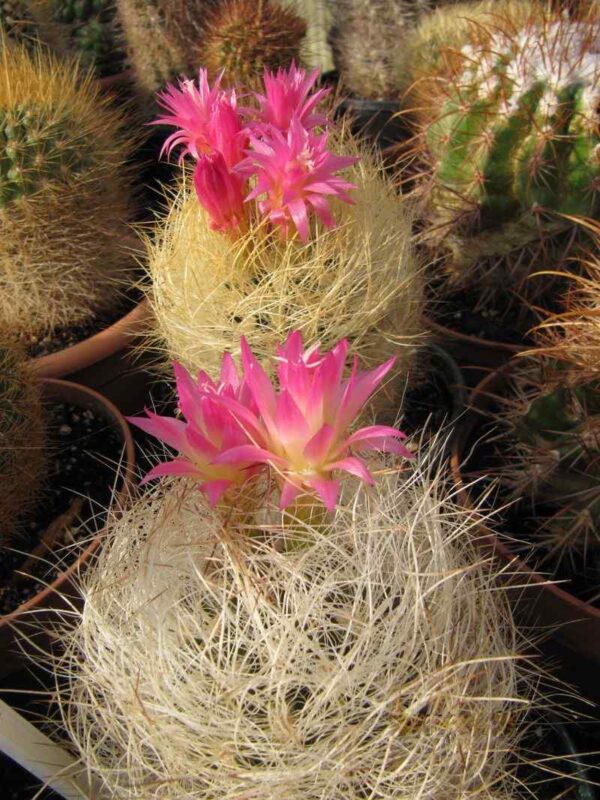
Neoporteria senilis, also known as the “Old Man of the Desert,” has fascinating characteristics—especially its dense white spines that resemble hair. Thriving in full sun, this cactus adds character to any garden while helping regulate temperature within its structure.
It thrives in well-draining soil and requires scant watering. The impressive yellow flowers that emerge annually enchant those lucky enough to see them. Neoporteria is not just a plant; it’s a statement piece that can elevate your landscape.
Nyctocereus – Nyctocereus serpentinus
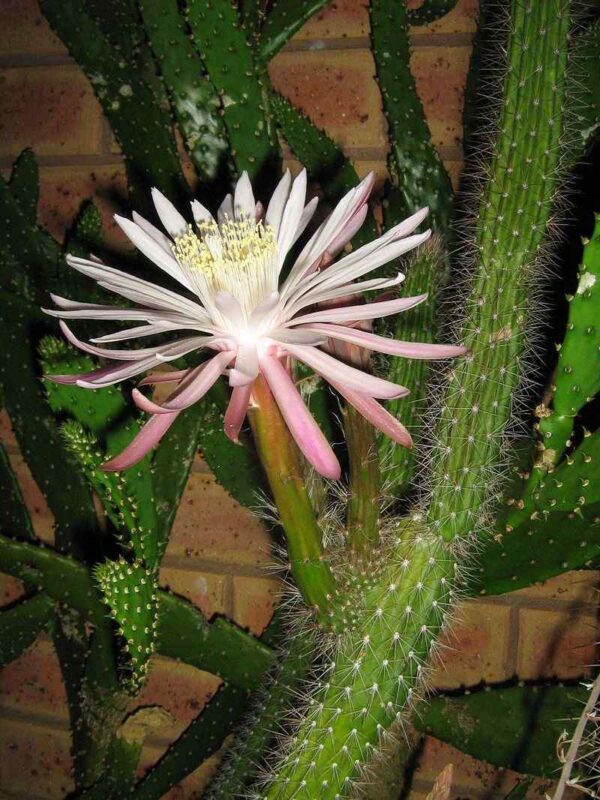
Nyctocereus serpentinus, often referred to as the “creeping nyctocereus,” showcases unique, serpentine growth. It thrives in full sun, adapting well to hot, arid environments. This cactus is particularly known for its intriguing growth habit, winding over rocks and soil.
Fast-growing with low maintenance needs, the creeping nyctocereus prefers infrequent watering. Its fierce and wild appearance brings a touch of drama to your garden, letting your plants truly express their identities.
Opuntia – Opuntia macrocentra
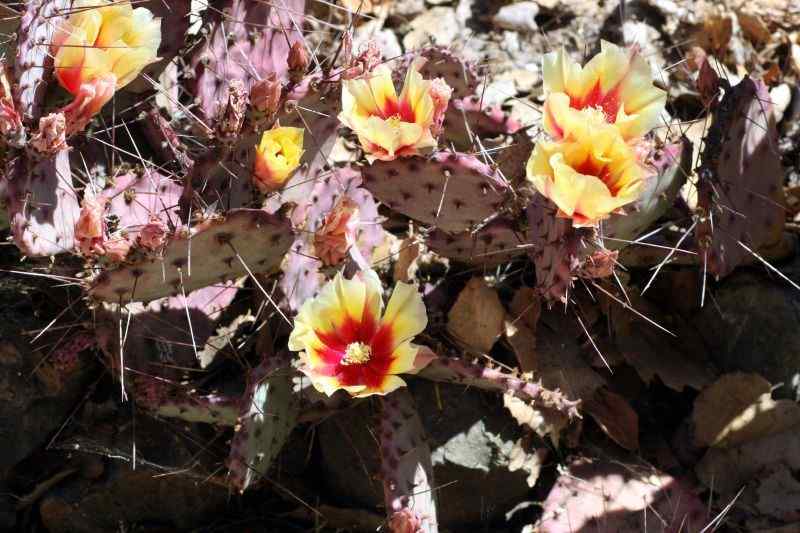
Opuntia macrocentra, known as the “purple prickly pear,” is a stunning cactus that adds vibrant hues to any garden. This succulent thrives in full sun, and its unique pads are adorned with show-stopping purple spines.
Opuntia prefers sandy soil and requires minimal watering. In the spring, the plant offers delightful yellow flowers, contrasting beautifully against its rich coloration. As a hardy plant, it makes an ideal choice for arid regions or rustic landscapes.
Orbea – Orbea variegate
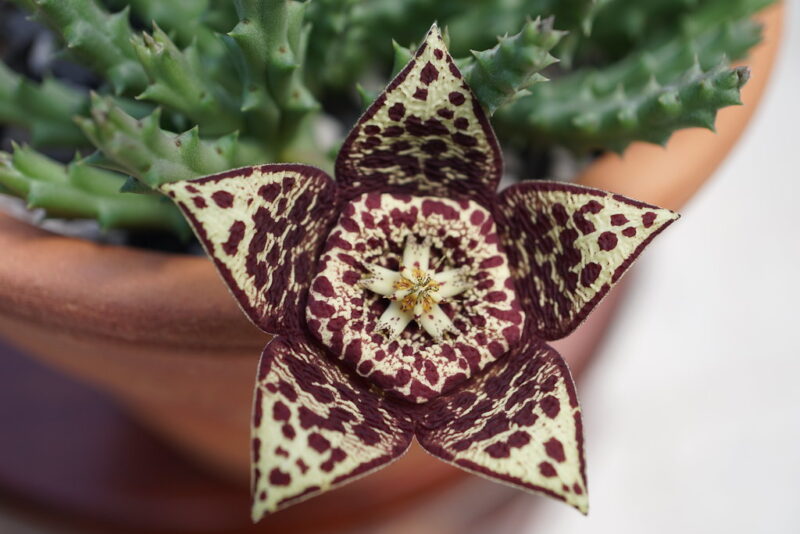
Orbea variegate, often called the “starfish flower,” boasts mesmerizing patterned leaves and a striking bloom that resembles a starfish. Thriving in full sun, this succulent is a true standout in any garden setting.
This succulent does well in well-drained soil and prefers infrequent watering once established. Its star-shaped flowers can emit an intriguing scent, appealing to various pollinators. The unique combination of appearance and fragrance makes Orbea a wonderful addition to any succulent collection.
Pachypodium – Pachypodium lamerei
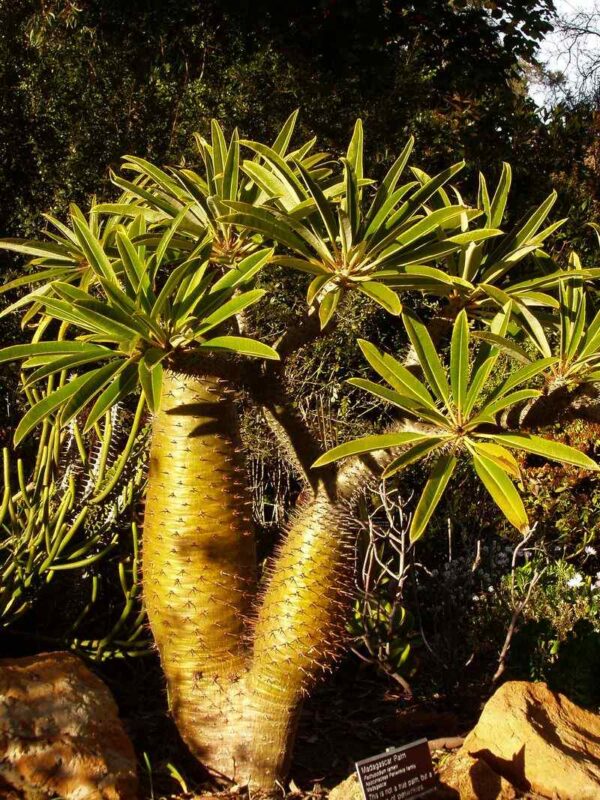
Pachypodium lamerei, or the Madagascar Palm, is a striking succulent that thrives in full sun, showcasing a unique blend of aesthetics and resilience. This plant features a thick, spiny trunk topped with lush greenery, creating an instantly recognizable silhouette.
Though it requires minimal care, Pachypodium enjoys a well-dranging mix and benefits from regular watering during the growing season. As a statement piece, it captivates gardeners with its distinctive structure and rare form.
Pleisopilos – Pleisopilos bolusii

Pleisopilos bolusii, often referred to as the “living stone,” presents a remarkable appearance that mimics the surrounding terrain. Thriving in full sun, its unique shape helps it blend into rocky landscapes, providing both camouflage and allure.
This unique succulent requires minimal watering and prefers gritty, well-draining soil. Its intriguing flowers emerge from the crevices of the leaves, showcasing delicate hues that draw admiration from plant lovers.
Sedum – Sedum acre

Sedum acre, commonly known as Goldmoss Stonecrop, is a vibrant ground cover succulent that’s perfect for sunny spots. It thrives in full sun and produces dense mats of bright green foliage accentuated by tiny yellow flowers in summer.
Sedum acre is incredibly low-maintenance and requires minimal watering. This drought-tolerant plant is an excellent choice for rock gardens or containers, spreading joy with its lively colors and textures. Its ability to survive in various environments makes it a resilient choice for any gardener looking to enhance their outdoor aesthetic.
Sempervivum – Sempervivum tectorum
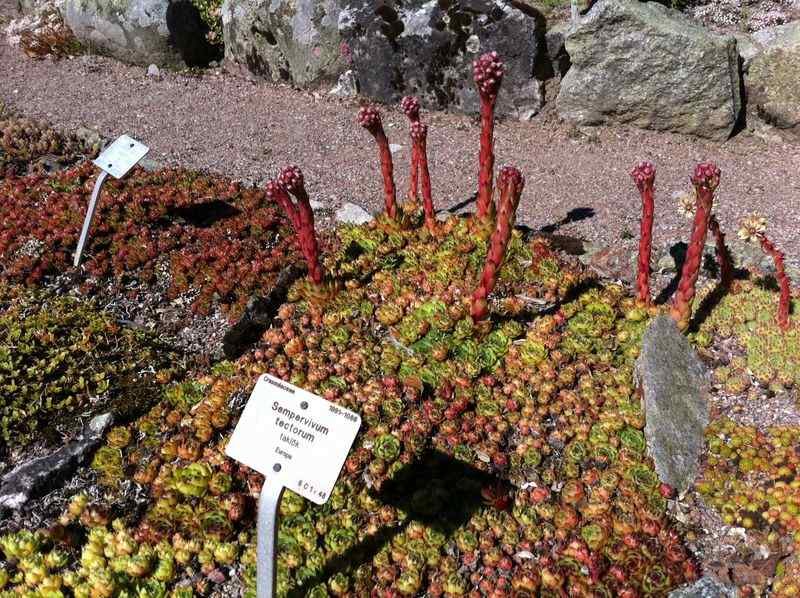
Sempervivum tectorum, popularly known as Hen and Chicks, is a favorite among succulent lovers. This charming plant thrives in full sun, forming rosettes that can reveal delightful blooms during the summer.
Sempervivum is incredibly resilient, making it perfect for beginners. It enjoys well-draining soil and requires minimal watering, allowing it to flourish in poor conditions. With its unique rosette formations and easy care, it’s easy to see why this succulent has captivated countless gardeners worldwide.
Tephrocactus – Tephrocactus geometricus
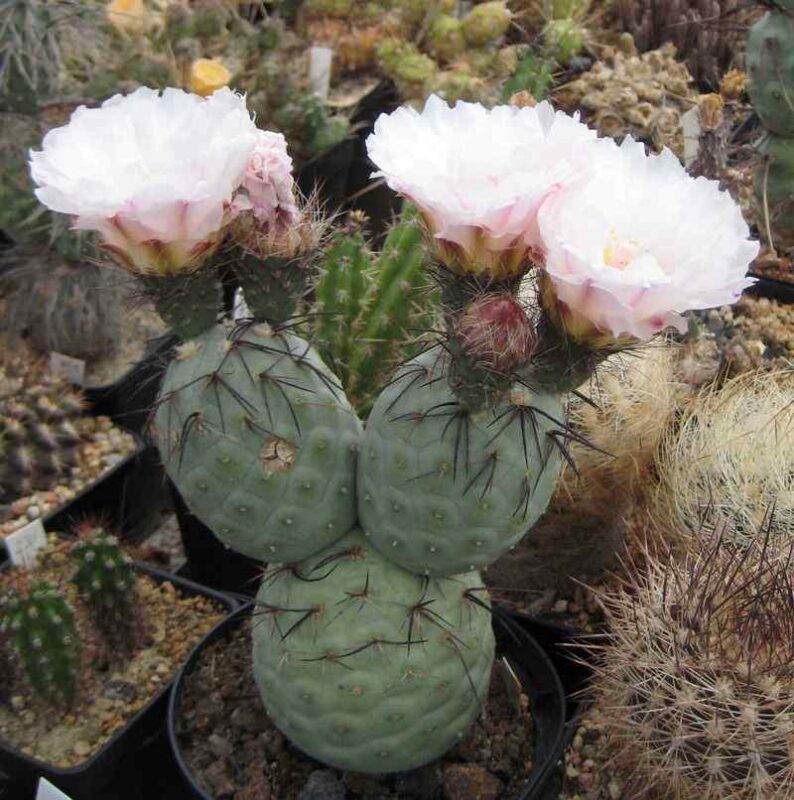
Tephrocactus geometricus, commonly referred to as the “geometric cactus,” showcases spherical, segmented pads that create an eye-catching visual. Thriving in full sun, it adds a geometric dimension to your landscape.
This cactus prefers free-draining soil and low watering. Its fascinating appearance combined with curious blooming patterns makes it an excellent addition for those looking to add unique shapes and colors to their garden.
Titanopsis – Titanopsis calcarean
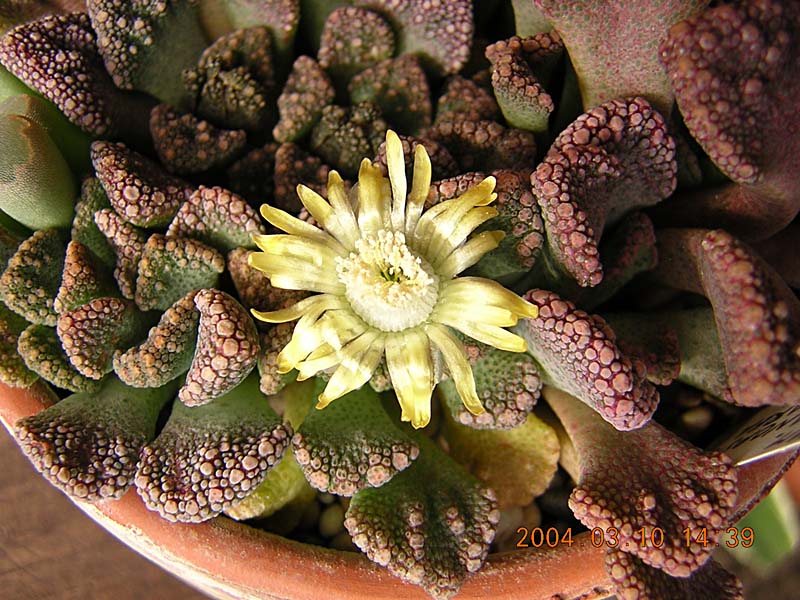
Titanopsis calcarean is a captivating succulent known for its unique, pebble-like leaves which camouflage perfectly with rocky surroundings. Thriving in full sun, this plant is perfect for rock gardens or containers where it can showcase its unique appearance.
Low watering is essential for this plant; it flourishes in gritty, well-draining soil. Its unique leaf shapes and colors make it an attractive choice for succulent enthusiasts looking to build a visually engaging display.
Yucca – Yucca rostrata
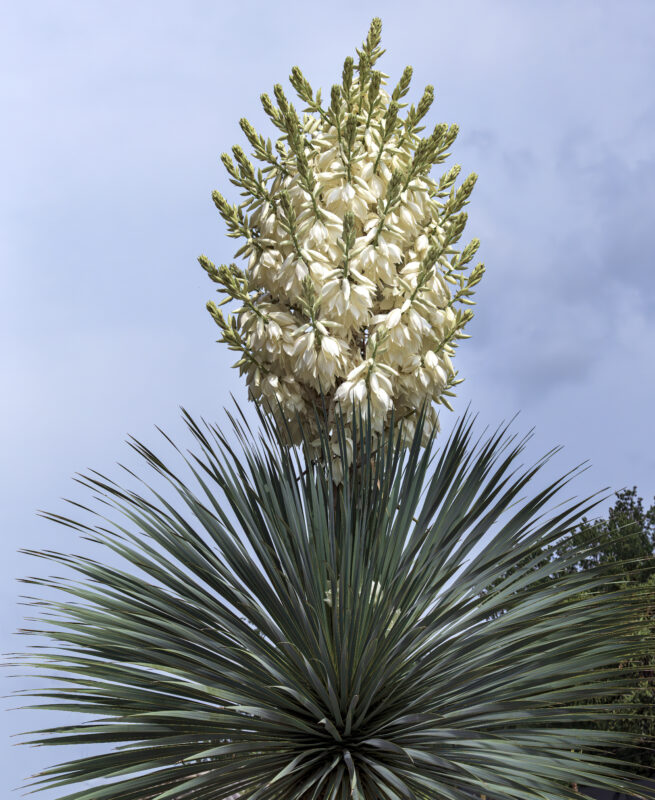
Yucca rostrata, or the “Big Bend Yucca,” is a quintessential succulent known for its sword-shaped leaves and tall floral spikes. This sun-loving plant thrives in full sun, creating a striking silhouette against any backdrop.
Preferring well-drained soil, Yucca benefits from occasional watering during dry spells. Its dramatic leaves and abundant flowers can create a stunning focal point in gardens, capturing the beauty of the arid landscapes it thrives in.


